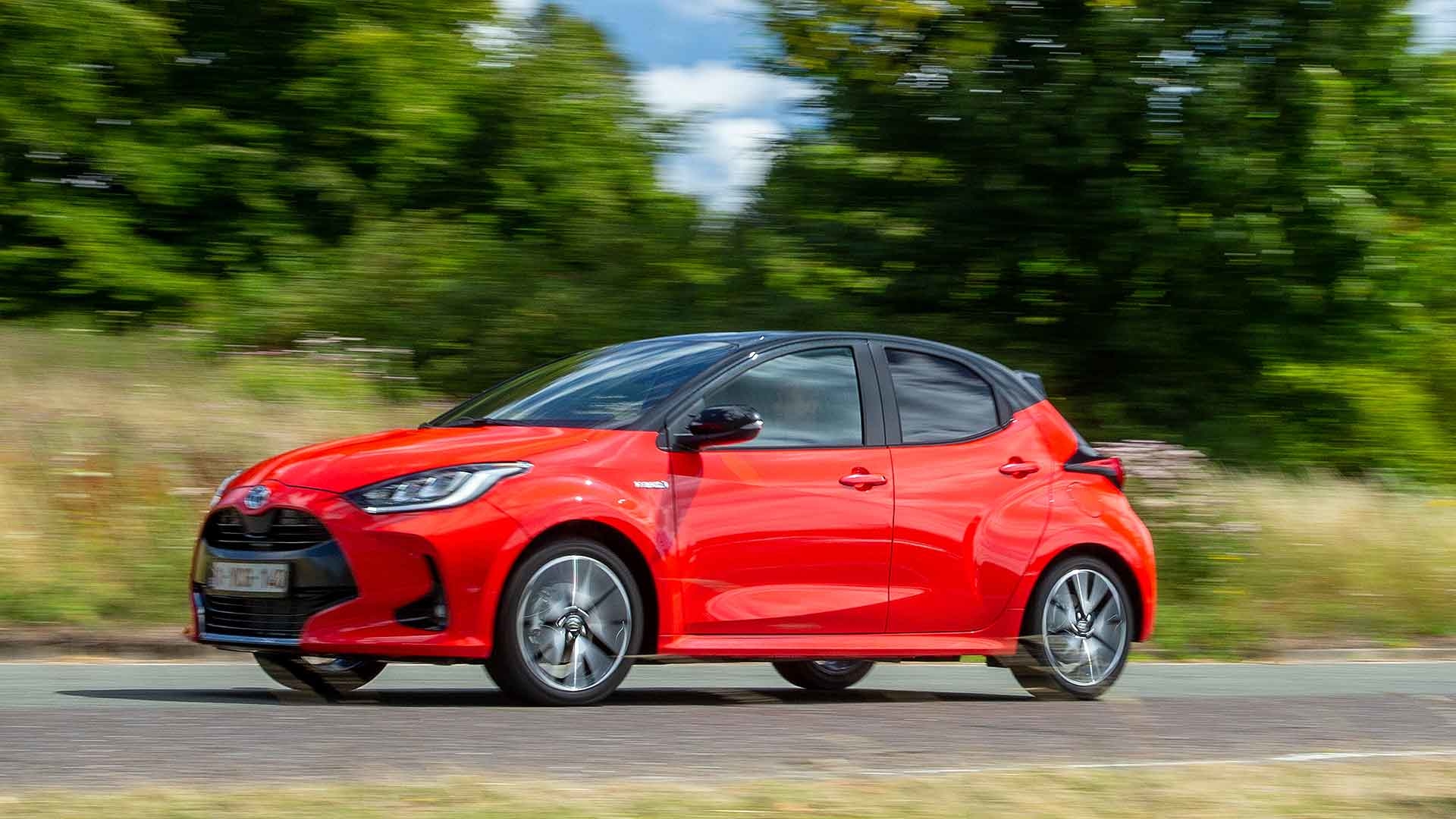
We forget the sheer impact the first-generation Toyota Yaris had when it was launched back in 1999. Replacing the dreary Starlet, this all-new car sported a modern, characterful design, a stylish interior, plentiful practicality and a fun-to-drive nature. It was an out-of-nowhere gem and was duly rewarded with the prestigious Car of the Year award for the year 2000.
It’s always been a popular car with Brits. The second-generation model added maturity, while the third-generation car introduced hybrid drive to the mix. Trouble is, as it developed, the Toyota supermini started reverting to type, with each new version progressively becoming less innovative than the one it replaced. Over 28,000 UK buyers in 2019 were purchasing not because it was exciting but because of the Yaris’ other strengths.
But a few years back, Toyota got a new boss, called Akio Toyoda. His mantra? No more boring cars. Proven by last year’s debut of the all-new fourth-generation Yaris, which instantly vies for the title of the best-looking, most head-turning supermini you can buy. With probably the most interesting interior. And, of course, a fuel-sipping hybrid drivetrain.
To drive, it’s leaps and bounds better than its worthy predecessor. Hybrid tech enhances rather than irritates. It’s appreciably more responsive. Handling is more stable and it shows greater maturity over bumps (even if the test car’s big wheels gave an unwelcome edge to the ride). It all feels very together. As welcoming as the original must’ve done more than two decades ago.
Toyota’s best-selling car in Britain is boring no more. Better than that, it’s able to go head-to-head with the sector leaders, with the ace card of its excellent hybrid tech up its sleeve. If you’ve been impressed by how it looks, read on, because there’s plenty more good stuff to back it up.
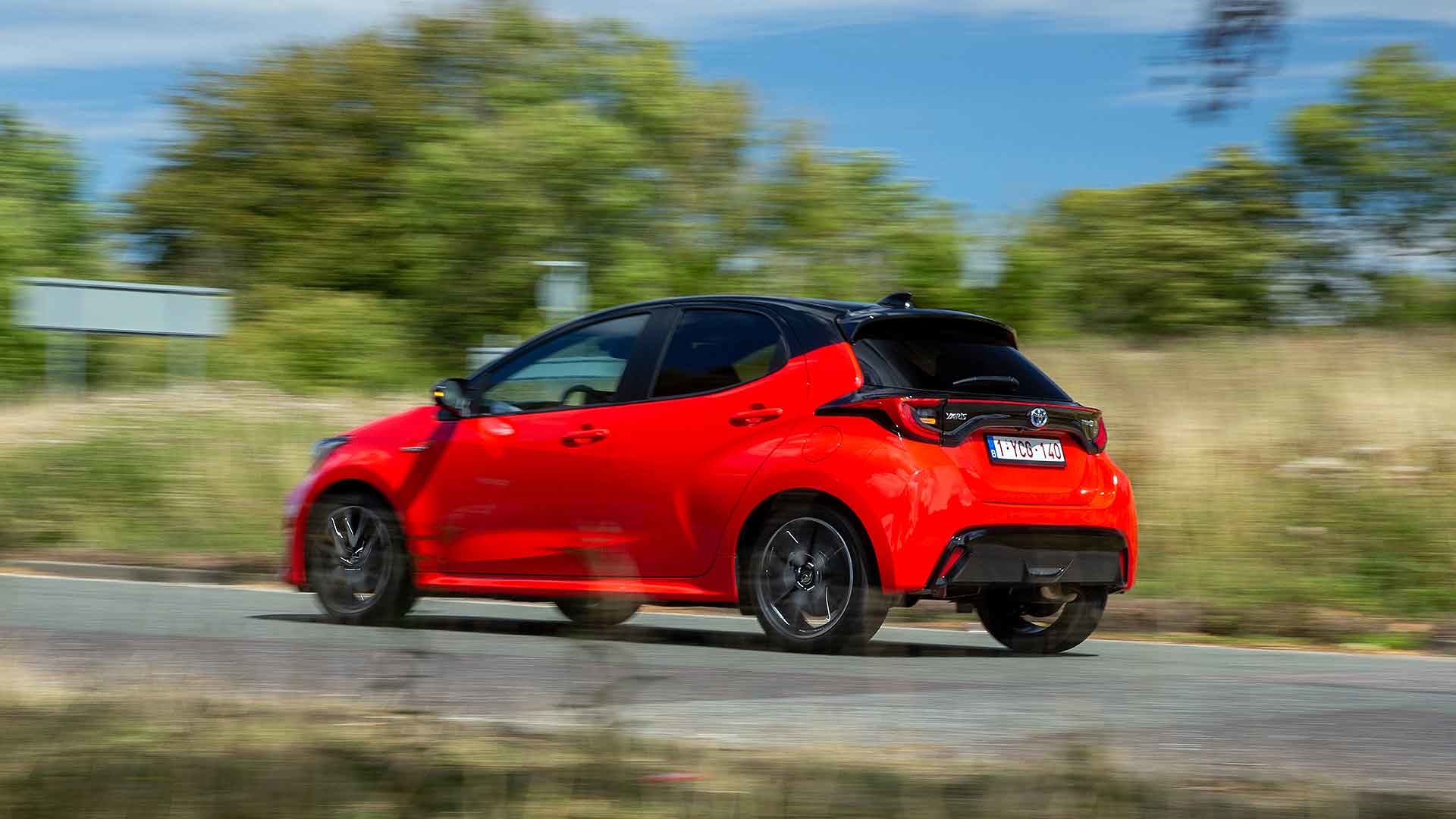
Driving the 2020 Toyota Yaris
The differences to the old Yaris are obvious as soon as you step in. The seats drop down much lower, and they’re deep and nicely bolstered, not flat and spartan. The sporty steering wheel is nice to hold, too. I love the modern fabric wrap on the doors (the door pull is also a work of structural art) and the whole interior feels high quality, with low-sheen, soft-touch plastics. It feels more premium than the latest Volkswagen Polo and, of course, is impeccably well assembled.
The Yaris I drove was from the European launch, but is equivalent to our Design spec, expected to comprise almost 1 in 2 sales. This comes with digital ‘binocular’ instruments, which look super-cool, and a bigger 8.0-inch central touchscreen rather than base Icon’s 7.0-inch display. All get Apple CarPlay and Android Auto integration though, something Toyota is pleased to at last offer.
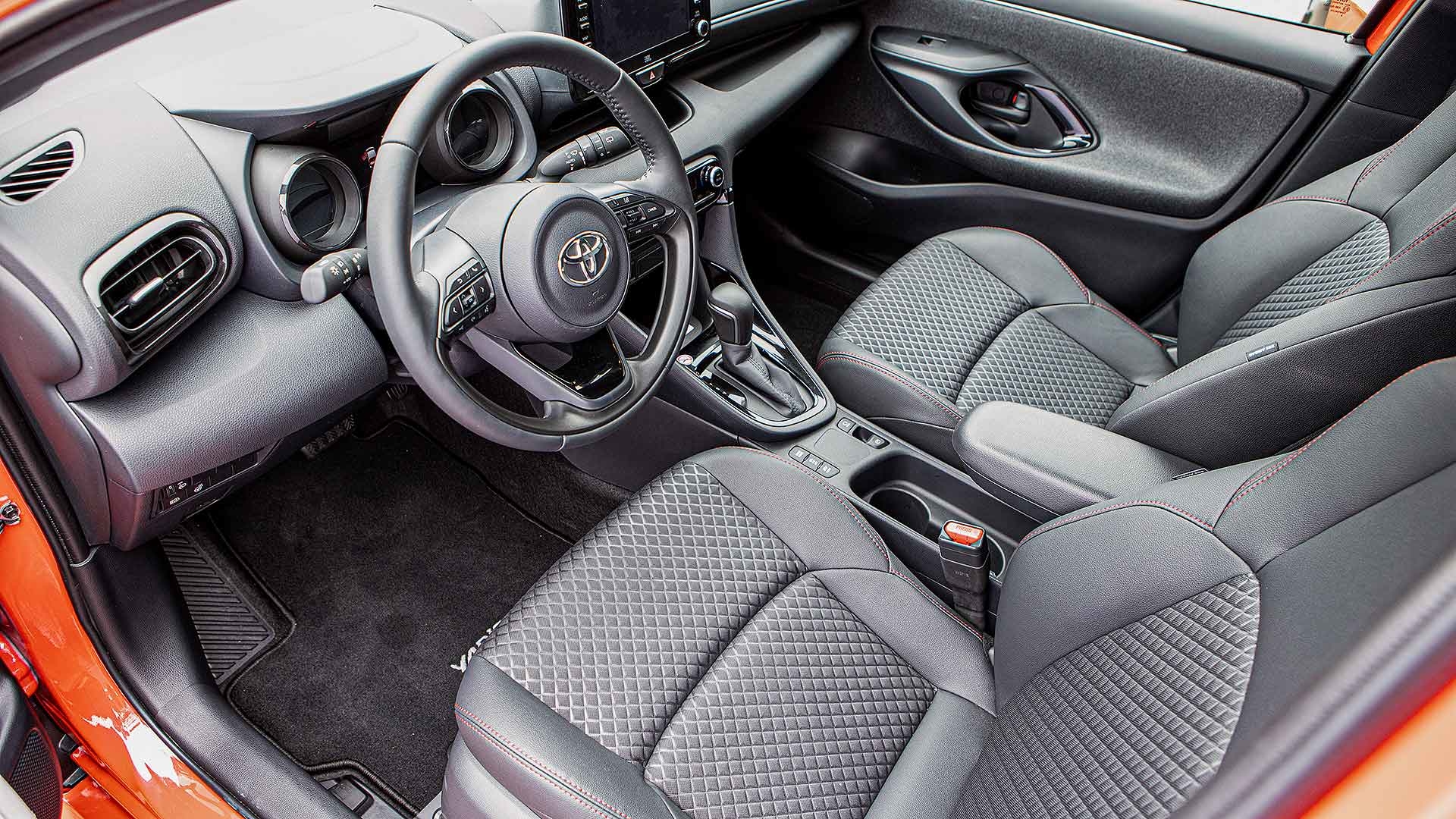
The interior is all so interesting, with effervescent design touches and great attention to detail. It perfectly complements the exterior, with its distinctive nose, bulging wheelarches and sporty rear infused with WRC attitude. Oh, and if you love the brilliant Tokyo Fusion Red pearlescent bi-tone colour of the car I drove, look out for the Launch Edition model, where it’s standard (otherwise it’s a hefty £1,180 option).
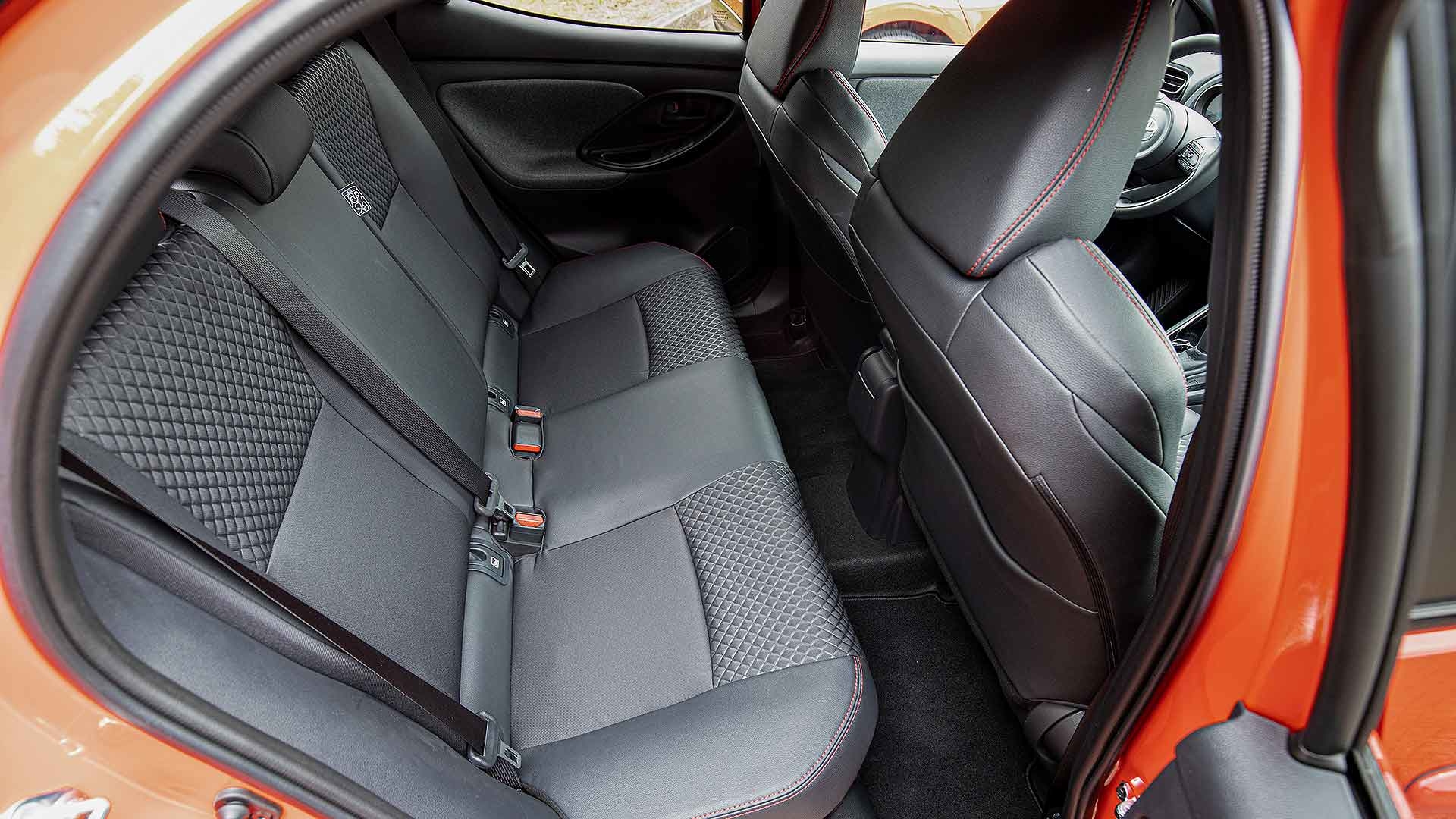
Rear seat space? Access through the surprisingly light doors is a bit tight, but there’s decent space once in there, even behind a seat set for my six-foot height (not always the case in superminis). There’s ample space for feet and knees, headroom is good and the firm seat base itself is comfortable, with generous under-thigh support. The rear windows are a bit small due to their sporty design (small childrens’ view out might be restricted), but otherwise it’s more than class competitive.
The boot is a bit smaller than the sector average, at 286 litres. It has a high but flat load floor, and a two-level layout so it’s easy to load. If you’re coming from a Skoda Fabia, you’ll find it a bit disappointing, but the shape is a practical one and it’s no better or worse than its hybrid arch-rival, the Honda Jazz.
As it’s a hybrid, an automatic is standard. Under the bonnet, the asthmatic old engine has been replaced by a new 1.5-litre three-cylinder motor: it runs on the ‘Atkinson cycle’, which uses internal combustion trickery to deliver far more efficiency than a regular engine. It also has a new fourth-generation Toyota hybrid system (think of all the rivals who barely have first-generation hybrid…) which uses a more powerful lithium ion battery. Total hybrid system power is 116hp.
I promise I won’t overwhelm you with engineering tech, but you should also know the Yaris hybrid (which doesn’t need to be plugged in, remember – it’s self-charging) has two motors. The first is linked to the wheels and provides the pure electric drive (at speeds, remarkably, of up to 80mph). The second is used to start the car, but also, when reversed, charges the batteries. And it’s Toyota’s ability to juggle how this system is used at ultra-fast speed (far quicker than the old car, an engineer told me) that’s key to the revolution in how it drives compared to the old Yaris hybrid.
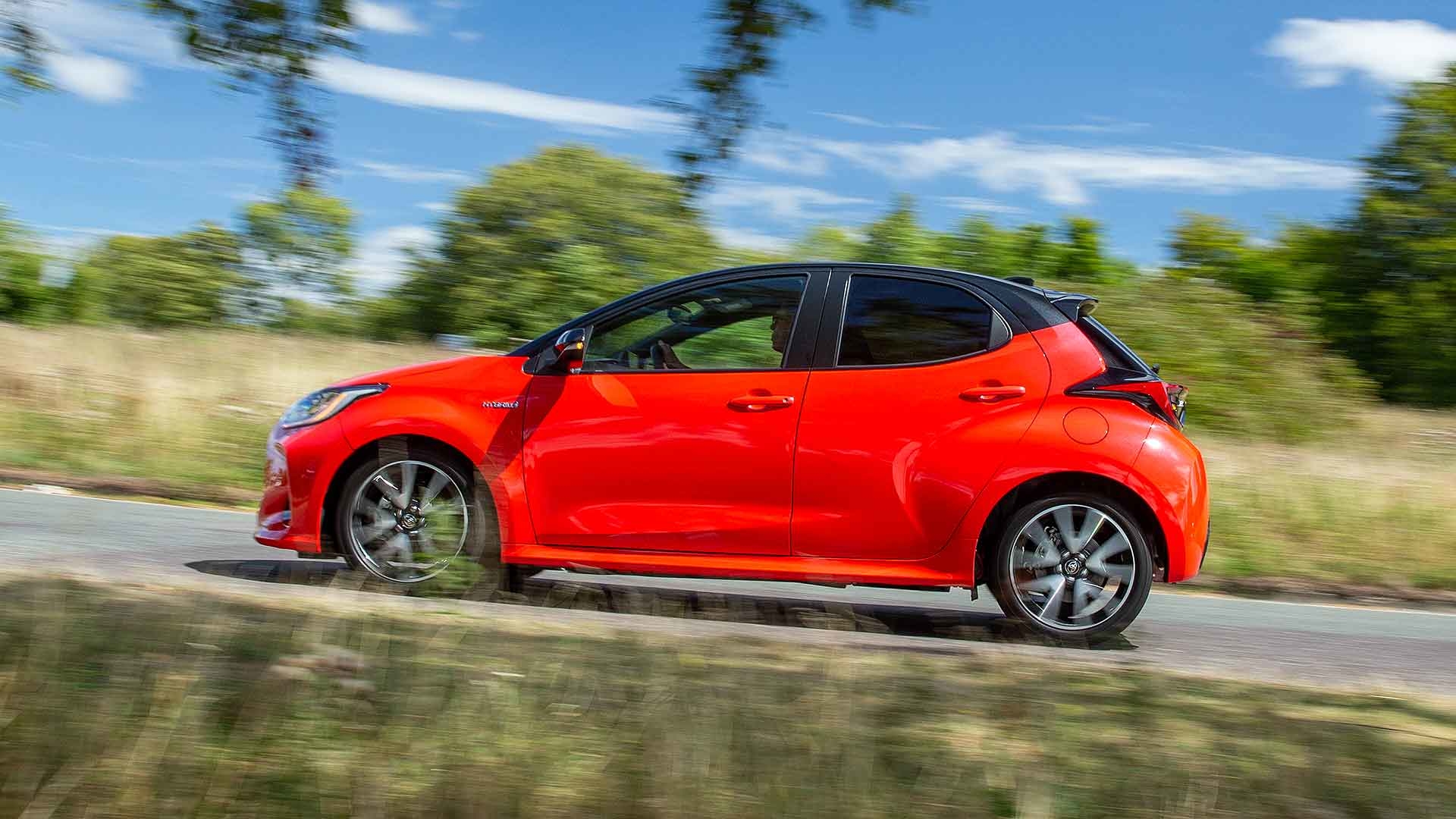
Chances are, you’ll start off in silent electric mode: a very refined feel. The engine kicks in a little later – but now with a deep three-cylinder throb, rather than a lightly grimacing wheeze. It sounds much nicer and more refined. It doesn’t rev up wildly when you demand maximum acceleration either, unlike older CVT-style transmissions. This is a big improvement over the old car: I willingly made use of the seconds-faster acceleration (0-62mph now takes 9.7 seconds) without fear for my ears.
After a few miles, the sheer intelligence of the hybrid system became obvious. Switching between pure electric and engine-on is perfectly seamless: if you have the radio on, you won’t notice (look for the green ‘EV’ light in the dash going out). There’s no sudden frenzied roar. And the combination of more powerful motors and battery gives an instant extra boost when you press the accelerator that also is a welcome all-new effect.
In town, it’s all so seamless and free-flowing. The engine runs when it needs to, largely independent of road speed, and turns off more often than you might think. If you’re an easygoing sort, it might be off more than it’s on – but still the system has a zap of instant boost to squirt into gaps that suddenly appear. It’s far more serene and relaxed than the old car: a great advert for why hybrid, when done right, is such a smart solution.
What surprised me was how well it all works at higher speeds. The old Yaris had a natural limit of around 50mph, above which, it started to feel like it was out of its depth. The engine was a bit too frenetic and the noise of sudden acceleration could be frenzied. The new Yaris has far more in reserve. It feels more powerful even than the 16 percent improvement in power suggests. It’s now good out of town as well as in it. Also amazing was how, on level roads at 70mph, it could even run in pure EV mode, engine fully off. Seriously impressive.
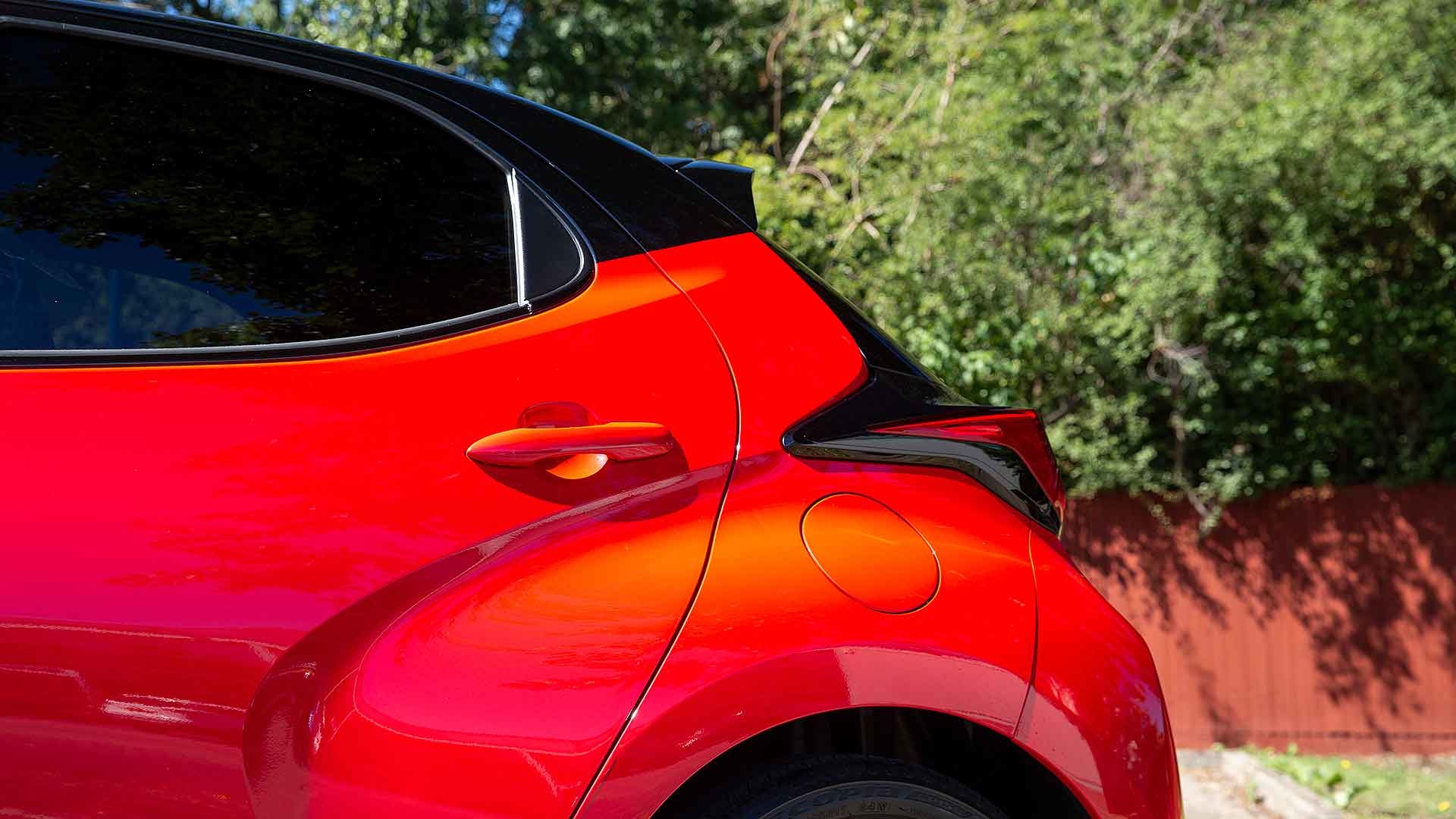
What about the rest of it? The driving position feels sportier, and so too does the drive. With this car, there was a firm edge to the ride, as it has 17-inch wheels with liquorish-style sidewalls to the tyres (most UK cars will come on comfier 16-inch wheels). But while it does pick up road surface roughness, can thud into bumps and patters over road pimples, the actual suspension setup itself is nice and compliant. Springs aren’t over-firm and on smooth roads, it has a smooth, grown-up, relaxed gait that’s quite sophisticated. With 16-inch wheels, I suspect it’s going to be very pleasant indeed.
The relatively light weight helps – from 1,085kg – as does the lower centre of gravity and sophisticated new underbody architecture. The new Yaris feels like a car with plenty of solid, robust integrity: it feels safe and reassuring. And it will be safe in everyday use, with an amazing haul of standard safety assist tech fitted to every version, including adaptive cruise control that slows when the car in front does, even if it fully stops. Lane-keep assist is also standard (and easily turned off), as is autonomous emergency braking that detects cars, pedestrians, cyclists, and even obstacles at junctions. Called Toyota Safety Sense, this comprehensive standard kit is a significant everyday safety bonus.
Other aspects of how this happy, easygoing car drives are better than before too. It responds to the steering smoothly and eagerly. While there’s some roll in corners, it’s well controlled, and the nimble confidence is backed up by a grippy feel and surprising feedback. It’s enjoyable to chuck around, and that’s not something you’d ever say about the old car. Meanwhile, at motorway speeds, the firm and stable steering responds positively to small inputs, which helps the driver relax.
At the end of my drive, there was just one thing left to do: check the economy. Despite often working the engine hard just to confirm it didn’t scream and assault your ears under acceleration unlike before, overall economy read 4.4 litres per 100km. In UK-speak, that’s over 64mpg. Driven normally, over 70mpg should easily be achievable. The final surprise of a very satisfying drive.
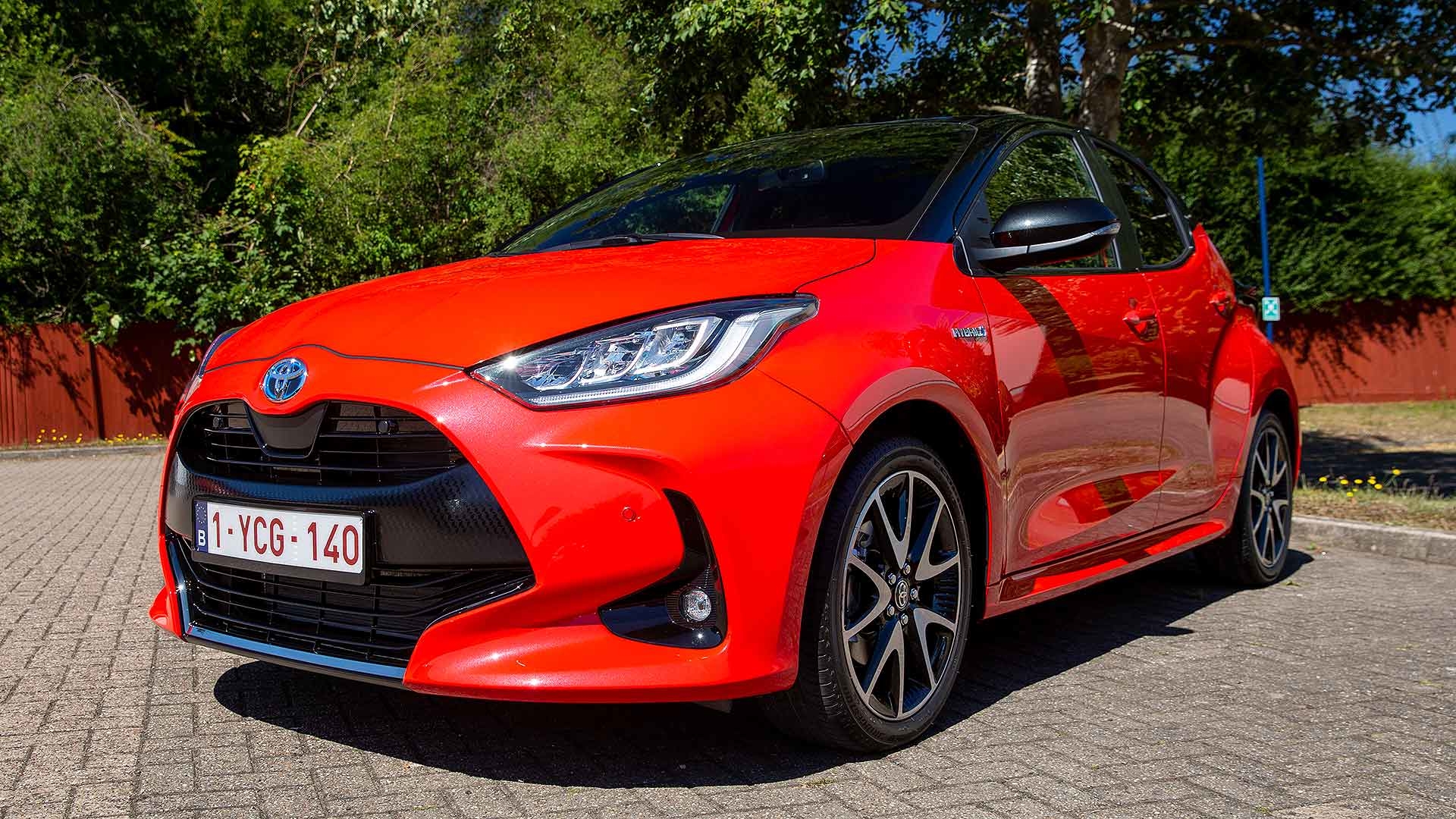
Verdict: 2020 Toyota Yaris
The new Toyota Yaris looks totally different and far more stylish than the old one. It has a superb interior. It’s perfectly practical, given its compact sub-four metre length. It has a praiseworthy level of standard safety technology, and a generous number of features elsewhere, particularly in the UK-favourite Design grade (priced from £20,970, which sounds steep, until you note the cheapest Ford Fiesta auto is nearly £23k…).
And the surprises continue when you drive it, I’m pleased to say. OK, the ride on 17-inch wheels isn’t great, but there are enough clues that cars running on the wheels most Brits will pick should be much better. Handling and roadholding are far more class-competitive though, and the overall vibes you get from the drive are feel-good.
What’s more, the hybrid drive is terrific. It’s now genuinely able to deliver a sophisticated, EV-heavy, multi-mode experience with sophistication, energetic response and refinement. And superb economy. All without having to plug it in. Finally, just like back in 1999, Toyota again has an appealing supermini genuinely able to fight head-to-head with the sector leaders.
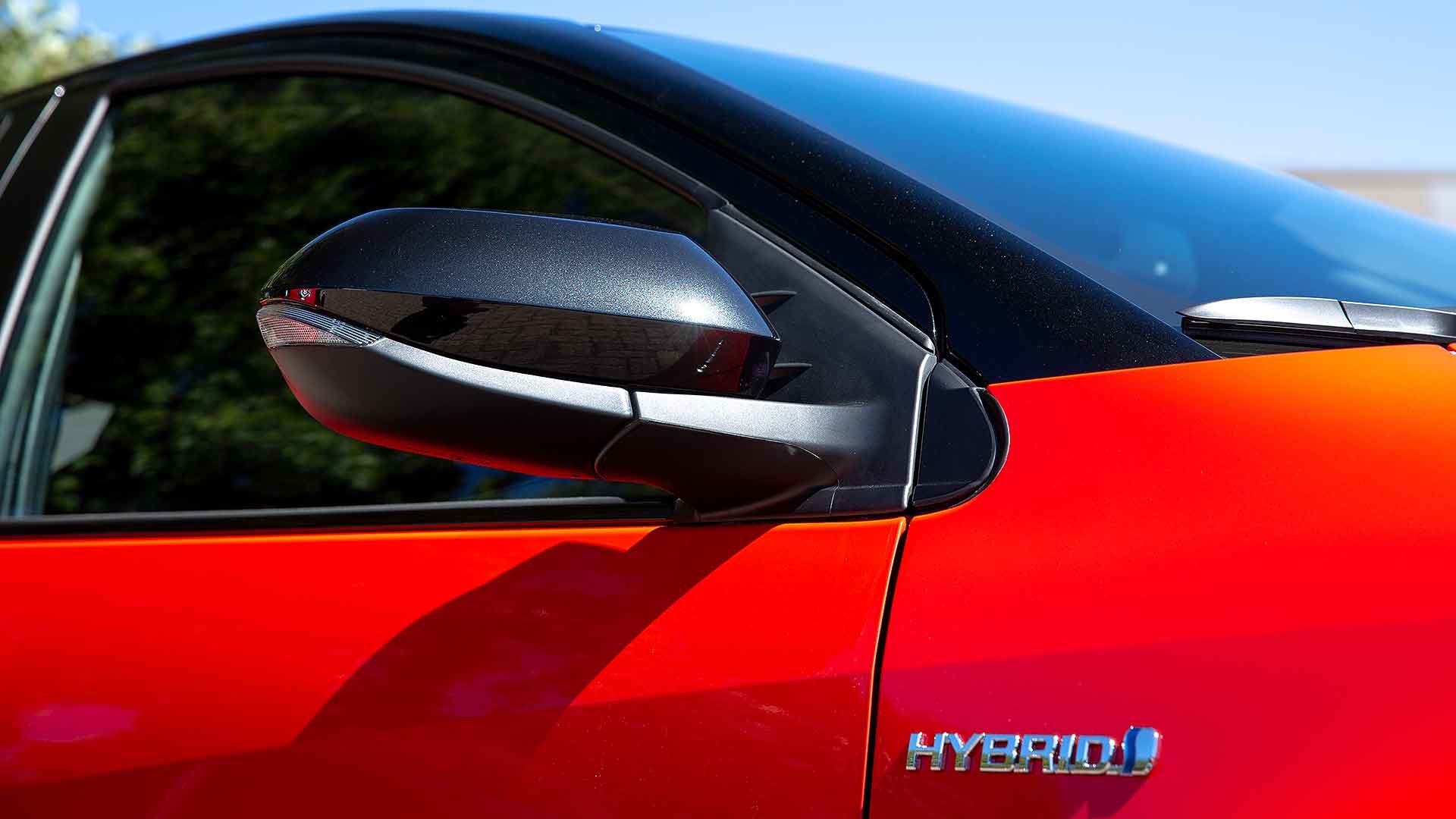
2020 Toyota Yaris specs
- Price: From £19,910
- Engine: 1.5-litre three-cylinder hybrid
- Power: 116 hp
- Torque: TBC
- Gearbox: CVT automatic
- 0-62mph: 9.7 seconds
- Top speed: 109 mph
- Fuel economy: 65.7 to 68.9 mpg
- CO2: 92 to 98 g/km
- Weight: 1,085 to 1,160 kg
- Length / width / height: 3,940 / 1,745 / 1,500 mm
- Boot capacity: 286 litres
ALSO READ